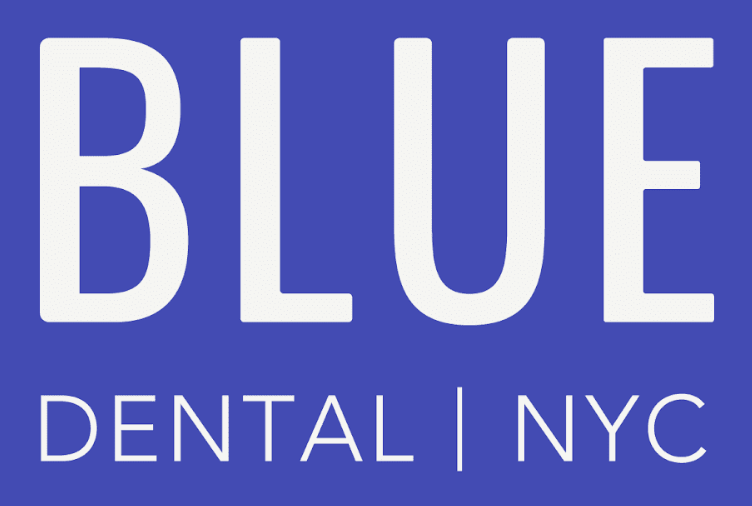Root Canal Treatment
in Upper East, Manhattan
A severe toothache, lingering sensitivity, or swelling can signal a problem inside the tooth. Root canal therapy (endodontic treatment) removes the infected or inflamed pulp, relieves pain, and saves your natural tooth. At Blue Dental on the Upper East Side, we focus on comfort, clarity, and predictable results.
Why choose us for root canals
- Comfort-first care: Thorough local anesthesia and a calm, step-by-step approach; nitrous oxide available.
- Precise technique: Careful canal cleaning, shaping, and sealing to protect long-term function.
- Restoration planning: We coordinate the protective buildup and crown when needed, so the tooth stays strong.
- Insurance-friendly: Up-front estimates, benefits verified, and claims filed on your behalf.
What is a root canal?
Inside every tooth is soft tissue (pulp) containing nerves and blood vessels. Deep decay, cracks, or trauma can inflame or infect this tissue. A root canal removes the diseased tissue, disinfects the canals, and seals them to prevent reinfection—allowing you to keep your tooth.
Signs you may need treatment
- Throbbing toothache or pain that wakes you at night
- Lingering sensitivity to hot/cold (lasting 30+ seconds)
- Tenderness when chewing or touching the tooth
- Swelling or a pimple-like bump on the gums
- Darkening or discoloration of a tooth
- Pain following a crack, trauma, or deep filling
The treatment process
- Diagnosis & imaging: Focused exam and X-rays to confirm the source of pain and map canal anatomy.
- Anesthesia & isolation: Profound numbing; a small rubber dam keeps the area clean and dry.
- Access & relief: We open a tiny entry, remove inflamed tissue, and relieve pressure.
- Clean, shape & disinfect: Meticulous instrumentation and irrigation inside each canal.
- Seal: Biocompatible filling (gutta-percha) seals canals to prevent reinfection.
- Build-up & crown (as needed): A protective core and custom crown often follow—especially for back teeth—to restore strength and prevent fractures.
- Follow-up: We recheck comfort and healing, and review home-care tips.
Many cases are completed in one visit; more complex anatomy may be scheduled over two.
Will it hurt?
You’ll be thoroughly numb; most patients feel pressure, not sharp pain. Post-treatment soreness is usually mild and managed with recommended medication and gentle care.
Aftercare & recovery
- Expect mild tenderness for a few days.
- Chew on the opposite side until the final crown is placed (if recommended).
- Keep the area clean; brush and floss normally.
- Call us if pain worsens after initial improvement or if the temporary comes loose.
Root canal vs. extraction
Saving your natural tooth helps maintain chewing efficiency, jawbone health, and alignment. Extraction may be appropriate in some cases; if so, we’ll discuss replacement options (implant, bridge, or partial) and timelines.
Cost & insurance
Fees vary by tooth (front vs. molar), complexity, and whether a crown is needed. Many PPO plans contribute to root canal therapy; coverage for the crown is billed separately. We verify benefits in advance, give transparent written estimates, and submit claims on your behalf. Flexible payment options are available.
FAQs
Do I always need a crown after a root canal?
Back teeth (premolars and molars) usually benefit from a crown to prevent fractures. Front teeth sometimes do well with a bonded restoration alone—depends on remaining tooth structure.
Can antibiotics fix this without treatment?
Antibiotics may reduce symptoms temporarily but
do not remove infection inside the canal. Definitive dental treatment is needed.
What if the tooth was already root-canaled and hurts again?
Retreatment or a small surgical procedure (apicoectomy) can often resolve persistent infection. We’ll evaluate and outline options.
How long will the tooth last?
With a proper restoration and good home care, root-canal-treated teeth can last many years.
Is it safe to travel or work after?
Most patients return to normal activities the same day, avoiding heavy chewing on the treated side until restoration is complete.
Ready for relief?
Book a root canal evaluation at our Upper East Side office. We’ll confirm the diagnosis, stop the pain, and map a clear plan to restore strength and comfort—so you can get back to life, fast.
